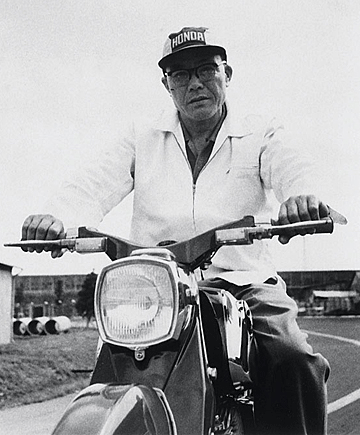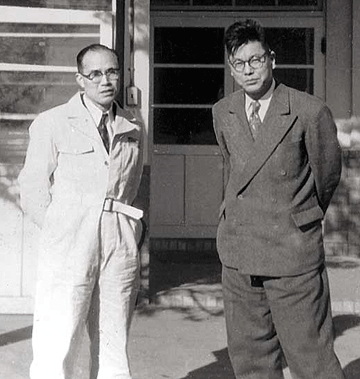
 Honda Motor Company is often seen as one of the squeakiest-clean companies in the world. But the neat and orderly Honda brand we see today is the product of a much less tidy individual. Company founder Soichiro Honda built this industrial powerhouse through the force of his audacious personality, which at times bordered on reckless.
Honda Motor Company is often seen as one of the squeakiest-clean companies in the world. But the neat and orderly Honda brand we see today is the product of a much less tidy individual. Company founder Soichiro Honda built this industrial powerhouse through the force of his audacious personality, which at times bordered on reckless.
Here are some surprising facts about this maverick genius.
He loved to party … hard
Soichiro Honda loved to drink, party, and generally raise hell. During a long night of rowdiness in the 1930s, he reportedly threw a geisha girl from a third-floor window. Another time, he drove off a bridge in a car packed with girls. And when post-World War II shortages crippled his booze supply, he began distilling homebrewed sake from medical alcohol, sharing it with friends on frequent benders.
 He despised formal education
He despised formal education
Soichiro Honda dropped out of school at about the high-school sophomore level. Granted, he did later bolster his credentials by studying engineering at the Hammamatsu Technical School. But then he shunned getting his degree there by refusing to take the final exam. Soichiro went on to further exhibit his disdain for formal education throughout his years at the helm of Honda Motor Company. He consistently favored naturally gifted engineers over those with lofty degrees, at times berating those with extensive education.
He sold his first company to Toyota
Before forming Honda Motor Company after World War II, Soichiro Honda had built a successful business making piston rings. Among Honda’s largest customers was the established giant of the Japanese auto industry, Toyota. In 1942, Toyota bought a 40-percent share of Honda’s company. When the war ended, Soichiro was sure that the victorious Americans would nationalize Toyota, so he sold the dominant carmaker his remaining 60-percent.
He clashed with Japan’s business culture
Over the years, many Americans have accused Japan’s government and automakers of unfairly colluding to dominate markets. But nothing could be further from the truth with Honda in its formative years. The Japanese government was indeed very cozy with the nation’s major industries, but Soichiro Honda was an outsider to these power players. He went against their collective wishes, ignored their demands, and generally clashed with their highly educated directors. For the most part, Honda Motor Company’s success has been in spite of Japan’s government more than because of it.
 He was criticized for making motorcycles
He was criticized for making motorcycles
Many people have heard the story of how Soichiro Honda launched Honda Motor Company by fitting small engines to bicycles after World War II, in response to gasoline shortages in Japan. But many today don’t realize that even that was a somewhat controversial move at the time. In fuel-starved postwar Japan, some people criticized Honda for building any sort of gasoline-powered vehicle. In truth, much of the reason Soichiro created his first motorized bike was because he got tired of being crammed into trains that were jam-packed because of the fuel shortage.
He was criticized for making cars
In hindsight, it may perhaps seem perfectly natural for Honda to have expanded from motorcycles to cars. But in the early 1960s, that was actually an impudent move in Japan — a shot against the nation’s powerful business cartel. Japan’s Ministry of International Trade and Industry (MITI) wanted to consolidate the auto industry and limit competition. Helping to enforce MITI’s edicts were the nation’s powerful banks, who cooperated in full by withholding financing from Honda.
 When you come right down to it, Soichiro Honda’s decision to build cars may have actually been one of the toughest choices he ever made.
When you come right down to it, Soichiro Honda’s decision to build cars may have actually been one of the toughest choices he ever made.